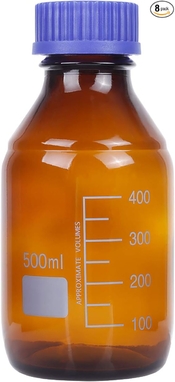Hilo
Subscriber
- Joined
- Apr 19, 2011
- Messages
- 922
- Format
- 35mm
Forgive me if someone already posted about this:
There was a time I was only getting 5 liter cans with developer and I used these brown glass 1 liter bottles with Acu Vin tops to keep them airtight. The developer stayed as fresh as can be, up to 3 or 4 months for sure. I used large etiquettes to date them. See attached picture.
The fixer, I always divided in 5 plastic fix bottles. This never went bad.
For a couple of years now, I have gone back to buying smaller quantities because I am printing less. When I pick up printing a lot again, I will go back to the Vacu Vin tops and the brown bottles.
The professional b/w printer who's idea this was, a very long time ago, also came up with the idea to free washed film on the reels from water by using a plastic letuce dryer. The one you turn fast . . .

There was a time I was only getting 5 liter cans with developer and I used these brown glass 1 liter bottles with Acu Vin tops to keep them airtight. The developer stayed as fresh as can be, up to 3 or 4 months for sure. I used large etiquettes to date them. See attached picture.
The fixer, I always divided in 5 plastic fix bottles. This never went bad.
For a couple of years now, I have gone back to buying smaller quantities because I am printing less. When I pick up printing a lot again, I will go back to the Vacu Vin tops and the brown bottles.
The professional b/w printer who's idea this was, a very long time ago, also came up with the idea to free washed film on the reels from water by using a plastic letuce dryer. The one you turn fast . . .






